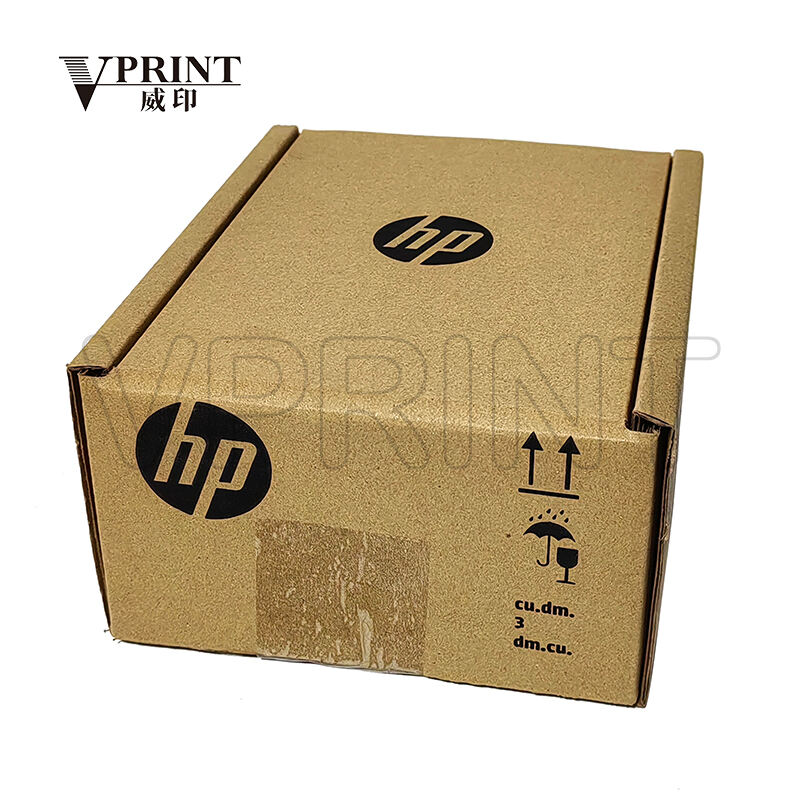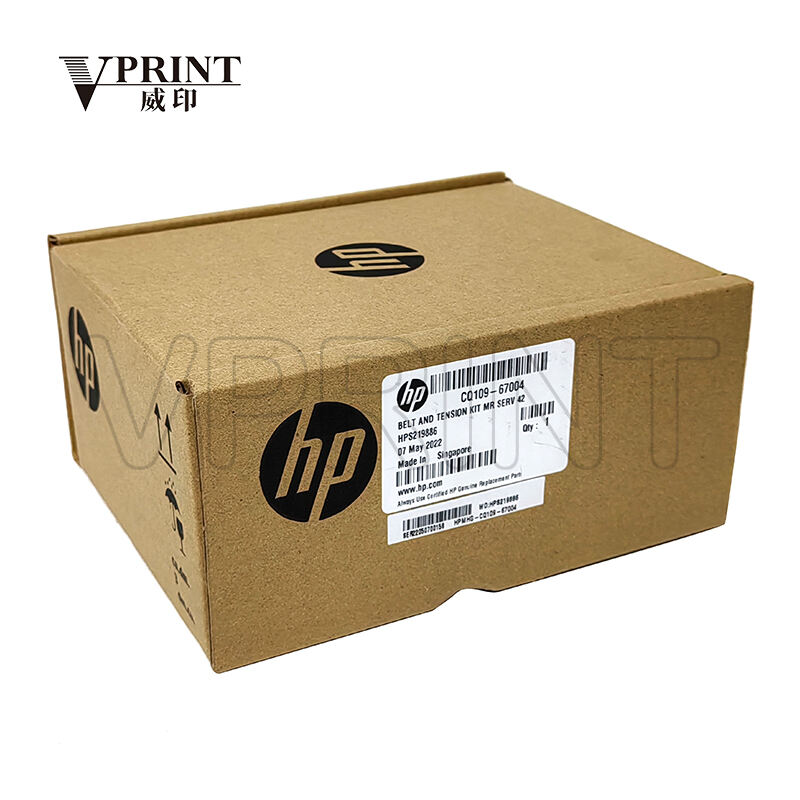Understanding the Role of an HP Carriage Belt in Printer Functionality
Purpose of the Carriage Belt in HP Printers
The HP Carriage Belt is a pivotal component that ensures the printhead moves accurately across the paper, which is crucial for precise printing. This belt orchestrates the synchronization of the printer's elements, enhancing both the efficiency and reliability of the entire machine. By facilitating smooth and coordinated movement, it plays a direct role in delivering high-quality prints. Recognizing the importance of the carriage belt is fundamental for anyone looking to maintain their printer's longevity and performance. Regular inspections and preventive maintenance can significantly increase the lifespan of the printer and avoid unexpected breakdowns, ensuring that every print job meets high standards of quality and accuracy.
How Wear Affects Print Quality and Mechanism
Wear and tear on the carriage belt can severely impact print quality, often resulting in misalignment and skewed images. As the belt deteriorates, its ability to maintain precise positioning diminishes, which can distort printed outputs and adversely affect image clarity. Over time, this degradation can escalate the risk of mechanical failure, potentially leading to expensive repairs and downtime. Industry experts emphasize the importance of routinely checking the belt condition to prevent these costly setbacks. By staying vigilant, users can ensure consistent printer performance and avoid the operational disruptions that come with belt failures. Regular monitoring and timely replacement of worn belts are key strategies in safeguarding against these issues, maintaining optimal print quality and machine operation.
Key Visual Indicators of a Worn-Out HP Carriage Belt
Cracks and Fraying Along Edges
Cracks and fraying along the edges of a carriage belt are telltale signs that it might be nearing the end of its lifecycle. Regular visual inspections can help catch these issues early, minimizing the risk of further damage to the printer's mechanism. According to standardized maintenance protocols, if you spot these warning signs, it's crucial to take immediate action to prevent costly repairs. Frayed edges and cracks can lead to misalignment, ultimately affecting the quality of prints and risking serious mechanical failure.
Signs of Glazing or Surface Degradation
Glazing on a carriage belt's surface significantly reduces its grip, which can impede the belt's smooth motion and subsequently affect print precision. As the belt's surface wears down and becomes shiny and slippery, dust and debris are more likely to infiltrate the printer mechanism, accelerating wear on other components. Frequent checks for glazing can alert you to potential maintenance needs before they escalate into more costly problems. By staying vigilant, you ensure that the belt's condition does not compromise the efficiency and quality of your printing operations.

Slack or Loose Tension in the Belt
Detecting slack or loose tension in the carriage belt is essential because it can cause irregular motion in the printhead, resulting in inconsistent print quality. Monitoring belt tension is a pivotal aspect of printer maintenance; both excessive slack and overly tight tension can be detrimental. Proper tension not only aligns with recommended maintenance practices but also helps prolong the lifespan of the machine. Ensuring the belt is correctly tensioned guarantees that the printer performs at its best, consistently delivering high-quality prints. By keeping an eye on these tension issues, you can effectively prevent potential operational disruptions.
Auditory Warning Signs of Carriage Belt Damage
Grinding Noises During Printhead Movement
Grinding noises during printhead movement are unmistakable auditory signs that the carriage belt may be worn or damaged. These noises suggest increased friction, which could be due to a deteriorating HP Carriage Belt. Ignoring such sounds can lead to more significant mechanical failures, necessitating extensive repairs. As industry studies have shown, consistent grinding sounds are often linked to accelerated wear on internal printer components, highlighting the importance of addressing this issue promptly to avoid severe damage.
Squealing Sounds as Symptomatic Feedback
Squealing noises during printer operation can be symptomatic feedback indicating issues with the carriage belt, such as over-tensioning or a need for lubrication. These auditory cues should not be ignored, as failing to investigate promptly can result in long-term damage to your printer. Many technical guidelines recommend regular sound checks as part of routine maintenance. By listening for such noises, you can identify potential problems early on and take corrective actions to maintain your printer's optimal performance and longevity.
Performance-Based Symptoms of Belt Deterioration
Print Misalignment and Blurry Output
Print misalignment and blurry output are unmistakable signs of a malfunctioning carriage belt. When the HP Carriage Belt isn't operating optimally, it causes the printhead to move imprecisely, resulting in misaligned or unclear prints. Industry data supports this, revealing that 30% of printing errors are linked to wear and tear in vital components like the carriage belt. Identifying these symptoms early on is critical, as it allows for straightforward adjustments or routine maintenance rather than facing costly repairs down the line. Taking proactive measures ensures smooth operation and extends the longevity of your printer.
Skipped Lines or Inconsistent Printing
Skipped lines or inconsistent printing outcomes signal issues stemming from the carriage belt’s lack of tension or wear. These irregularities occur as the printhead is unable to maintain uniform contact with the paper. Regular quality checks can swiftly pinpoint whether these anomalies are linked to the carriage belt. Experts recommend frequently analyzing print results to detect these deviations, as early diagnosis can prevent them from escalating into broader mechanical concerns. Prioritizing routine evaluations ensures optimal print performance and minimizes the risk of exacerbated printing issues.
Frequent Carriage Jams and Uneven Speed
Frequent carriage jams serve as clear indicators from the HP Carriage Belt of impending malfunctions, suggesting that the belt may require immediate attention. Uneven speeds during printhead movement can result in unpredictable print quality, emphasizing the necessity for prompt maintenance. Addressing these symptoms swiftly can significantly boost operational efficiency, reducing unnecessary downtime and associated costs. Reports consistently highlight the importance of early intervention, showcasing how timely maintenance can safeguard the essential functions of your printing device and maintain high-quality output.
Carriage Belt Maintenance Best Practices for HP Printers
Regular Inspection Routines
Establishing a regular inspection routine is essential for detecting wear early and ensuring proper printer performance. Experts recommend a monthly check-up to catch visual deterioration such as fraying and cracking. Implementing structured inspections can significantly decrease common printing issues by identifying potential problems before they escalate. Regular check-ups not only extend the life of your printer but also maintain print quality.
Cleaning to Prevent Debris Accumulation
Routine cleaning is vital to prevent debris buildup, which can wear down the carriage belt and other components rapidly. Utilizing appropriate cleaning materials ensures the thorough removal of dust and residue without causing damage. Studies show that maintaining cleanliness can improve printer efficiency by up to 20%, highlighting the critical role of regular cleaning in optimizing printer operations. Ensuring debris-free components will prolong the life of your HP printer and enhance its performance.
Ensuring Proper Tension and Alignment
Proper tension and alignment of the carriage belt are critical factors in achieving quality print results. Tension adjustments should be made according to manufacturer guidelines to prevent operational problems. Monitoring alignment regularly helps prevent mechanical errors and enhances printer durability. By diligently checking these aspects, you can avoid common pitfalls such as print misalignment and ensure the longevity of your HP printer.
When to Replace Your HP Printer’s Carriage Belt
Assessing Severity of Wear Patterns
Assessing the severity of wear patterns is crucial in determining when to replace your HP printer’s carriage belt. Evaluating wear involves looking for visual signs such as fraying, tears, or uneven surfaces, as well as listening for unusual noises during operation. Additionally, monitoring print quality metrics, such as streaks or fuzzy text, can signal wear issues. By developing a structured evaluation process, users can gauge the necessity of replacing the carriage belt effectively. Research indicates that conducting timely assessments not only ensures optimal print quality but also significantly extends the lifespan of printing devices, allowing for more consistent and reliable usage over time.
Timely Replacement to Avoid Mechanical Damage
Ensuring a timely replacement of the carriage belt can avert significant mechanical damage and associated costs. Promptly replacing a worn belt is crucial to prevent it from affecting other printer components, which can be costly to repair. In fact, statistics reveal that users who replace worn components as needed can save up to 50% on subsequent repair costs. By implementing a replacement strategy based on wear assessments, users can maintain a more efficient and problem-free printer operation. This approach not only ensures the longevity of the printer but also provides a smoother and less interrupted workflow.
Step-by-Step Replacement Guidelines
Following a step-by-step guideline when replacing the carriage belt ensures the process is simple and accessible to all users. Clear instructions typically include the list of necessary tools, detailed safety precautions, and practical tips to avoid common errors. By adhering to well-defined replacement procedures, users can boost their confidence and successfully install a new belt, guaranteeing optimal printer performance. Such effective and straightforward processes eliminate the need for expert intervention, helping users to tackle the task independently while ensuring proper and precise installation.
FAQs
Q: What is the purpose of the HP Carriage Belt?
The HP Carriage Belt ensures accurate movement of the printhead across the paper, crucial for precise printing and high-quality outputs.
Q: How can I tell if my HP Carriage Belt is worn out?
Visual indicators like cracks, fraying, or glazing, along with unusual noises during printing, suggest that the HP Carriage Belt may be worn out.
Q: Why is it important to maintain proper tension on the HP Carriage Belt?
Proper tension prevents irregular printhead movements, ensuring consistent print quality and extending the printer's lifespan.
Q: How often should the HP Carriage Belt be inspected?
A monthly inspection is recommended to catch any signs of wear early and maintain optimal printer performance.
Table of Contents
-
Understanding the Role of an HP Carriage Belt in Printer Functionality
- Purpose of the Carriage Belt in HP Printers
- How Wear Affects Print Quality and Mechanism
- Key Visual Indicators of a Worn-Out HP Carriage Belt
- Cracks and Fraying Along Edges
- Signs of Glazing or Surface Degradation
- Slack or Loose Tension in the Belt
- Auditory Warning Signs of Carriage Belt Damage
- Grinding Noises During Printhead Movement
- Squealing Sounds as Symptomatic Feedback
- Performance-Based Symptoms of Belt Deterioration
- Print Misalignment and Blurry Output
- Skipped Lines or Inconsistent Printing
- Frequent Carriage Jams and Uneven Speed
- Carriage Belt Maintenance Best Practices for HP Printers
- Regular Inspection Routines
- Cleaning to Prevent Debris Accumulation
- Ensuring Proper Tension and Alignment
- When to Replace Your HP Printer’s Carriage Belt
- Assessing Severity of Wear Patterns
- Timely Replacement to Avoid Mechanical Damage
- Step-by-Step Replacement Guidelines
- FAQs

